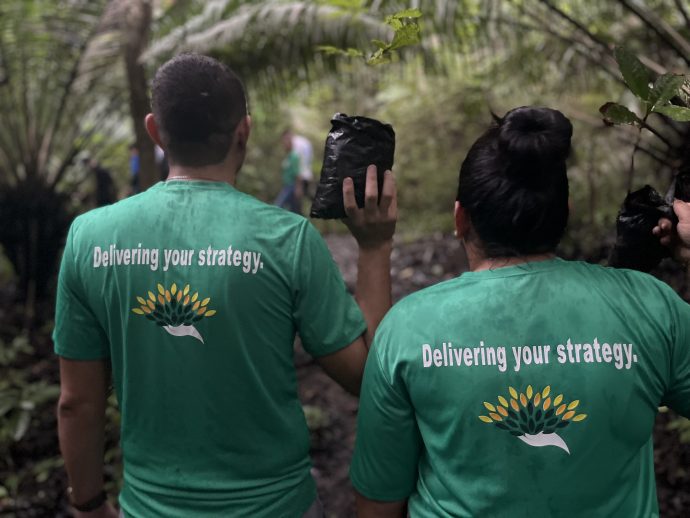The past year been a challenging one for Panama.
Following the most severe drought period in more than 75 years, water levels in Lake Gatun, which feeds the Panama Canal dropped by more than 10%.
According to data from the Panama Canal Authority (ACP), in September 2023 the average water level was just 79.8ft, down from a high of 87.2ft. As a result, the waterway’s capacity for transiting vessels – especially those with larger drafts – was compromised.

In October last year, the Panama Canal announced the reduction of the number of transit slots by up to 50% in February, leaving vessels in both the Atlantic and Pacific Oceans with the difficult decision as to whether they wait for slot to open up, pay the high cost to skip the queue or reroute completely around Cape Horn.
Thankfully, water saving measures and transit restrictions imposed by the Panamanian government and ACP, along with earlier than expected rainfall this spring, have alleviated those concerns. In May, the Canal opened up more transit slots, and in August the maximum authorised draft for vessels transiting the Neopanamax Locks increased, along with the total number of daily booking slots, up to 36. By October, it is hoped they will reach a maximum of 38 transits per day.
Local impact
However, the impact of the drought on the local economy cannot be ignored. About 20% of the country’s GDP comes directly or indirectly from the Canal, so the reduction in daily transits hit the local economy hard.
Most of the water used in Panama Canal operations comes from Lake Gatun, which is also the main drinking water source for half the country’s population. The pressure of having to choose between people and ships is real. Fortunately, the drought did not result in any restricted or cut off water supplies for the public.
The measures put in place over the past 12 months proved very effective in keeping the Panama Canal operational and ensuring public water supplies were unaffected.
The ACP has proposed a $1.6 billion Rio Indio Reservoir project to supplement Lake Gatun, which would give it greater jurisdiction over local watershed boundaries and enable Panama to combat its vulnerability to weather patterns.
However, such a project could take up to six years to build so it is vital to implement some of the lessons learned as soon as possible. In the short term, this includes cross chamber lockages to achieve significant water savings.
Changing trade
The Panama Canal is changing to offer a more competitive solution for world trade in line with today’s changing cargo markets. Reservation of transit slots is now strongly advised to avoid disruption at either side of the 50 mile-long waterway.

There have been notable changes to trade since last year. Container ships are seeing something of a renaissance with the number of transits up more than 30%, according to data from Drewry Shipping. Meanwhile, we are seeing a drop in traffic carrying dry bulk and gas cargoes. This is due to more LNG cargo being sold to Europe, while the congestion has also slowed US-Asia LNG trade. Further, bulk carriers are traditionally unwilling to pay the higher amounts needed to secure a slot, with some choosing to reroute around Chile instead.
Education, information and implementation
Early on in the disruption prompted by the drought, GAC was quick to distribute and explain what was going on at the Panama Canal. Our ‘open door policy’ and daily Hot Port News bulletins were key to getting the information out there as quickly and as easily as possible.
Our team held many meetings with customers throughout the disruption, which proved highly effective in giving them direct access to local expertise amid ever-changing limitations.
In that way, we were able to reformulate and implement transit strategies and options to ensure vessel disruption was kept to a minimum. Our ‘education, information and implementation’ approach was crucial to navigate our customers through a particularly challenging period.
This level of support is, of course, expected of GAC. What we are doing now is helping to secure the Canal’s long-term future.
Environmental causes
The unprecedented drought has made our dependence on rainfall and Lake Gatun a matter of major national concern which must be addressed.
At GAC Panama, we take such issues - and their underlying environmental causes seriously - and take whatever action we can to tackle them.

Teams of volunteers from our staff are actively involved in reforestation efforts in the watershed, and helping to plant trees across more than 25,000 acres of abandoned cattle pastures along Panama’s Pacific Coast.
That active response to the environmental threats we face reflects the wider GAC Group’s sustainability policy which commits us to "adapt, innovate and reduce" in our activities and engage stakeholders to create non-destructive, long-term value towards a sustainable future.
We shall continue to actively engage with our customers to provide the best support possible to help them navigate the Panama Canal.
GAC Panama helped its customers ride the storm once and we are ready to do it again.